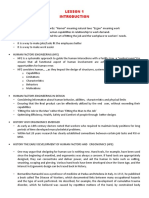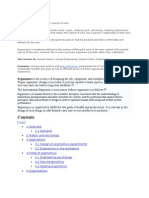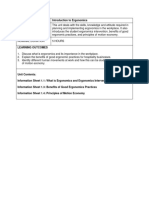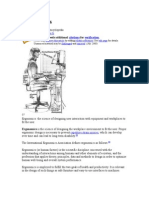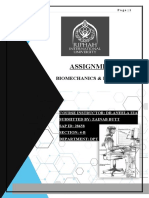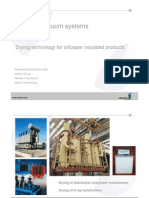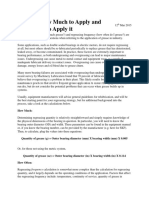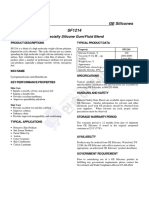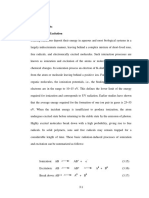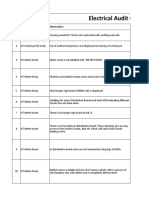0% found this document useful (0 votes)
108 views7 pagesErgonomics for Workplace Efficiency
Ergonomics is the science of designing the job to fit the worker. The purpose of ergonomics is to protect worker health, maximize productivity, and reduce injuries. It aims to consider human abilities and limits in workplace design. As industries require higher production, jobs often involve frequent lifting, repetitive tasks, long hours, and fast paces - which can lead to physical stress and injury. An ergonomist evaluates factors like anthropometry, biomechanics, and psychology to understand human capabilities and consult workers on redesigning tools, equipment, and work processes to reduce strain and improve the match between jobs and human limits. The advantages of ergonomics include reduced health issues, higher productivity, less absenteeism and errors
Uploaded by
tushar vatsCopyright
© © All Rights Reserved
We take content rights seriously. If you suspect this is your content, claim it here.
Available Formats
Download as PDF, TXT or read online on Scribd
0% found this document useful (0 votes)
108 views7 pagesErgonomics for Workplace Efficiency
Ergonomics is the science of designing the job to fit the worker. The purpose of ergonomics is to protect worker health, maximize productivity, and reduce injuries. It aims to consider human abilities and limits in workplace design. As industries require higher production, jobs often involve frequent lifting, repetitive tasks, long hours, and fast paces - which can lead to physical stress and injury. An ergonomist evaluates factors like anthropometry, biomechanics, and psychology to understand human capabilities and consult workers on redesigning tools, equipment, and work processes to reduce strain and improve the match between jobs and human limits. The advantages of ergonomics include reduced health issues, higher productivity, less absenteeism and errors
Uploaded by
tushar vatsCopyright
© © All Rights Reserved
We take content rights seriously. If you suspect this is your content, claim it here.
Available Formats
Download as PDF, TXT or read online on Scribd
/ 7









